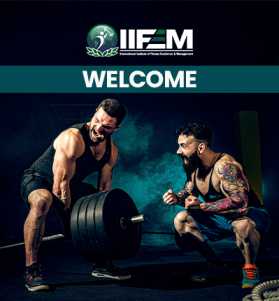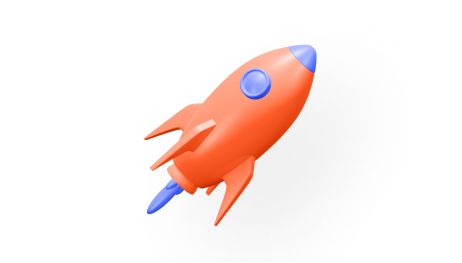
Strengthening Weak Spots The Power of Corrective Exercises in the Gym
In the journey of fitness, people often encounter hurdles. Sometimes, these hurdles manifest as weak muscles, particularly in areas like the back and shoulders. But fear not, for corrective gym exercises, are here to save the day! These exercises aren't just about looking good; they're about feeling strong, preventing injuries, and improving overall performance.
What are the different types of muscle weaknesses?
Let's start by understanding what muscle dysfunction is all about. Our muscles are like finely tuned instruments. When one section is out of sync, it affects the harmony of the entire ensemble. Muscle dysfunction occurs when certain muscles aren't pulling their weight, which can lead to imbalances and, eventually, injuries.
When it comes to weak spots, the back and shoulders often take the spotlight. Poor posture, prolonged sitting, and improper lifting techniques are common culprits. But there are ways to address these issues.
Role of a personal fitness trainer
Before talking about corrective exercises, it's crucial to identify the problem areas. This is where assessments come into play. A trained certified fitness trainer should evaluate the movement patterns, pinpoint weaknesses, and customise a plan to address them. These exercises target specific muscles or muscle groups to restore balance and function. But don't expect miracles by bench-pressing your way to success here; it's all about precision and control.
Stretching also plays a vital role in this process. Tight muscles can exacerbate imbalances and hinder progress. Incorporating stretching routines alongside corrective exercises can help release tension and improve flexibility.
But what kind of exercises are we talking about?
Think of basic tools like resistance bands, stability balls, and bodyweight movements. These tools offer versatility and accessibility, making them perfect for addressing weak spots.
For back muscles, exercises like rows, deadlifts, and lat pulldowns can work wonders. These movements target the muscles of the upper and lower back, helping to improve strength and posture. When it comes to the shoulders, exercises such as shoulder presses, lateral raises, and external rotations are your best friends. These movements target the deltoids and rotator cuff muscles, promoting stability and preventing injuries.
Consistency is key when it comes to corrective exercises. Incorporate these exercises into the daily routine regularly, and you'll start to notice improvements over time.
Remember, the goal isn't just to look strong; it's to be strong from the inside. Corrective exercises may not always be flashy or glamorous, but their impact on a person’s overall health and performance is undeniable.
So, the next time your client hits the gym, don't neglect those weak spots. Embrace corrective exercises as your secret weapon in the pursuit of strength, stability, and overall fitness. Your clients will thank you for it!
Explore more courses offered by IIFEM - Personal physical trainer.
Category
Recent Blog

Why is insulin neede... Read more
July 05,2023
10 Tips for Strength... Read more
August 14,2023
Sample Strength and ... Read more
September 06,2023
Why are some lifters... Read more
September 15,2023
Why do Barbells and ... Read more
September 22,2023
Secret Routine to Bu... Read more
September 26,2023
When to use Insulin,... Read more
September 28,2023
Why lifters should u... Read more
September 29,2023
What is power traini... Read more
October 09,2023
The Future of Fitnes... Read more
October 17,2023
Why Pursue a Fitness... Read more
October 21,2023
Career Paths for Cer... Read more
October 31,2023
Elevating Your Perso... Read more
November 21,2023
Gym Safety Correctiv... Read more
December 26,2023
5 Different Types of... Read more
December 27,2023
Elevate Your Fitness... Read more
December 28,2023
Embark on Your Fitne... Read more
January 24,2024
Mastering Nutrition ... Read more
January 24,2024
Building Strength wi... Read more
January 27,2024
Boost Your Career: B... Read more
January 27,2024
7 main reasons why y... Read more
February 15,2024
Unlocking Essential ... Read more
February 19,2024
Unlock Your Fitness ... Read more
February 20,2024
Unveiling the Path t... Read more
February 28,2024
How to choose the ri... Read more
February 29,2024
How a Fat Loss and E... Read more
March 27,2024
Transformative Insig... Read more
March 27,2024
The Importance of a ... Read more
April 10,2024
Mastering the Art of... Read more
April 22,2024
Unlocking Your Caree... Read more
April 23,2024
The Evolution of Per... Read more
May 27,2024
Elevate Your Fitness... Read more
May 28,2024
Choosing the Right P... Read more
June 25,2024
Role of Protein in F... Read more
June 26,2024
Career Opportunities... Read more
June 27,2024
How Fitness Certific... Read more
July 29,2024
Building a Successfu... Read more
July 30,2024
Qualities to Look fo... Read more
August 21,2024
How Gym Trainer Cert... Read more
August 28,2024
How Fitness Trainer ... Read more
September 20,2024
The Role of a Person... Read more
September 23,2024
Immunity Boosting Pl... Read more
October 17,2024
How Fitness Trainers... Read more
October 22,2024
Transform Your Fitne... Read more
October 28,2024
Certified vs. Uncert... Read more
November 22,2024
The Role of Nutritio... Read more
November 25,2024
The Importance of Co... Read more
December 28,2024
5 Powerlifting Train... Read more
December 28,2024
How Personal Trainer... Read more
January 24,2025
Essential Online Nut... Read more
January 25,2025
How Personal Trainer... Read more
January 27,2025
5 Immunity-Boosting ... Read more
March 01,2025
What to Look for in ... Read more
March 01,2025
The Impact of a Pers... Read more
March 27,2025
The Benefits of Beco... Read more
March 28,2025



